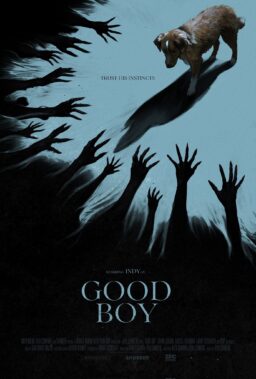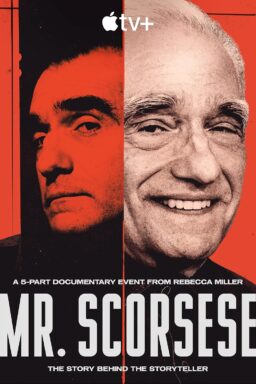Editor’s note: Earlier this month, as part of their University of Illinois College of Media Roger Ebert Fellowship, the 2022-24 Ebert Fellows undergraduates Lee Beckett, Andrew Stover, and Tania Trejo got an eyeful of nonfiction wonders at the True/False Film Festival in Columbia, MO. Here are their reports.
Lee Beckett
True/False was the first film festival I’ve ever experienced, anywhere. Each of the screenings, many at the Missouri Theatre in downtown Columbia, played to a packed and highly reactive house. Each significant moment on the screen hit the audience like a wave, giving the documentaries a unique energy, more akin to a concert or house party than a typical night at an AMC. I had enlightening conversations with fellow audience members walking out of the theater, and the variety of films guaranteed something for everyone. Two standouts: the Italian film “Gigi La Legge” and the NYC-set “The Stroll.”
“Gigi La Legge” (or, “Gigi the Law”) follows a small-town policeman in the countryside of northern Italy. Gigi’s days consist of patrolling quiet neighborhoods and saying hello to everyone he sees while chatting on his radio with the new dispatcher, Paola, or arguing amicably with his fellow police officer, Annalisa.
But an unpleasant current cuts through the sunny exterior shots of rural Italy in the form of a rash of suicides. Gigi surveys the railroad tracks where a body is discovered in the film’s first few minutes. Director Alessandro Comodin portrays the slow, easygoing progression of Gigi’s days in long takes, which take on a foreboding quality when the normally jovial cop paces restlessly along the tracks.
“Gigi La Legge” is far from a traditional documentary. Part reality and part fiction, the film occasionally dips into the surreal and requires the viewer to determine the truth. Comodin portrays the Friuli region of Italy with distinct ease, aided by the fact that Gigi (played by Pier Luigi Mecchia) is a small-town Italian cop and Comodin’s uncle. Gigi’s eccentricities are endearing; he sings along to most songs on his squad car radio and tries (and fails) to test ride a teenager’s Vespa. Comodin presents the image of a well-intentioned man brimming with charisma, struggling to share his empathy in the world around him.

Gigi’s efforts to reconcile his desire to serve his neighbors culminate in a later scene. Gigi and Paola take a mentally ill woman to an in-patient care program. Comodin focuses on Gigi for several minutes as he recounts taking a young man to a similar institution years ago, where he was mistreated. Gigi’s ever-present smile slips gradually as he describes the young man begging to stay out of the institution but eventually agreeing to go out of respect and trust for Gigi. Gigi’s face breaks down completely as he describes the hospital staff’s rough handling of the young man and the brutality of the sedatives he is given. The film offers no solution to Gigi’s struggle, instead presenting the psychological and emotional state of a caring man grappling with pain. It’s a touching ode to empathy itself.
Unlike the exquisite Italian scenery of “Gigi La Legge,” “The Stroll” depicts a dismal view of bleak circumstances and, somehow, smiling faces. The painful stories of New York’s Meatpacking district, specifically West 14th Street, which was known by residents as the Stroll, come together to illuminate a community built through shared oppression and abuse.
Co-director Kristen Lovell, who made the film with Zackary Drucker, is a trans woman and former sex worker who worked the Stroll for several years. The conditions of the Meatpacking district at a different phase of Manhattan’s ongoing gentrification are described through interviews with other surviving sex workers. Throughout these early days on the Stroll, trans women bonded and protected one another from danger. Lovell adds layers of humanity to the film through humor and a familiarity with her subjects. Their personalities come through vibrantly in the form of intensely vulnerable stories of turning to prostitution, of the destitution of homelessness, and the danger of soliciting johns in a heavily stigmatized society. But their struggles in the Meatpacking district pale in comparison to the effects of then-Mayor Rudy Guiliani’s hypervigilant police force, which cracked down on loitering with intent to commit prostitution, specifically for transgender women.

In the film, Tabytha Gonzalez recounts her arrest for soliciting prostitution, revealing that she was given a sentence of five years but served fourteen in the harrowing conditions of Rikers Island. She came home to find most of her friends from the Stroll had died, and the Meatpacking district was no longer accessible to her.
“I can’t believe how many times I had to go to jail for this Highline Park to be built,” Lovell remarks as she and fellow former sex worker Cashmere walk through the sanitized, unrecognizable modern West 14th Street. Lovell portrays stigmatized members of society as sacrificial lambs all but slaughtered in the name of gentrification. The images of the Meatpacking district today are polished and highly sophisticated, contrasting sharply with the raw archival footage of the same neighborhood 30 years ago. “The Stroll” serves as a reflection of the life that Lovell had in a place where powerful people worked hard to crush her; it’s also a moving tribute to the sex workers who didn’t survive.
Andrew Stover
Across multiple theatres, audiences over the first weekend in March at the True/False Festival experienced a collection of bold documentaries that made them feel, applaud, and appreciate the art and versatility of non-fiction cinema. My favorites were “Time Bomb Y2K,” Brian Becker and Marley McDonald’s eye-opening documentary about the Y2K panic, and “Anhell69,” Theo Montoya’s hypnotic deconstruction of death in which fiction overlaps with reality.
A world premiere made up entirely of archival footage, “Time Bomb Y2K” made audiences consider how easily dynamics can shift when a freak wave of hysteria washes over us. Since I was born in 2000, the Y2K panic eluded me; these past few years in America, however, have shown me that hysteria, regardless of origin, can bring out the very worst (and very best) in people.
The film has no central subject. Directors Becker and McDonald sifted through hours and hours of archival footage to create a uniquely structured, ticking-clock scenario. In doing so, they expose the tensions and anxieties of an era characterized by digital expansion and commercialization of fear itself.
In 1999, as the new century drew closer, panic and uncertainty surrounding a computer glitch, primarily known as the Y2K millennium bug, became increasingly prevalent. Society feared that many data-based systems, everything from banking networks to missile launching systems, might collapse simply because computers would be incapable of processing the year 2000, thereby shutting down much of life as we know it.
The directors compile television footage of journalists, engineers, doomsday preppers, civilians, and politicians (particularly John Koskinen, who served as the official Y2K supervisor). A Y2K emergency supplies market surfaced amid a time of distress. In hindsight, such developments seem truly dispiriting and yet totally on-brand with our capitalistic drive.

With wildly mixed intentions, people speculate about the imminent threat of Y2K throughout Becker and McDonald’s film. The directors allow the archival clips to play out without pinpointing whose opinions and intentions may have been pernicious or untruthful; they trust the audience will find out for itself. Whether you lived through the panic or not, “Time Bomb Y2K” throws you back into the chaos, without the aid of voiceover narration or contemporary interviews, looking back.
It’s a little disappointing we don’t see or hear from any contemporary subjects who might have learned a thing or two from what they experienced then. But the archival approach is still gratifying; it re-creates a prolonged, uneasy moment in time.
Though “Time Bomb Y2K” works with a decidedly unique structure, wait until you witness Theo Montoya’s “Anhell69,” a documentary set in Medellín, Colombia. A few years ago, Montoya was in the beginning stages of creating a fictional film, casting queer actors for a dystopian ghost story about specters living among humans. Camilo Najar was going to be the film’s protagonist, but he died, leaving Montoya grief-stricken and unable to finish the movie.
Cut to a few years later, when Montoya made “Anhell69,” its title taken from the late Najar’s Instagram handle. It’s clear that one of Montoya’s functions with this multifaceted documentary is to
remember and honor all the friends he lost. Another objective is to represent an entire generation of nihilistic youth.

The film begins ominously with a hearse driving on a misty, vacant road. The driver is Colombian director Víctor Gaviria (which Montoya, who attended True/False, mentioned during the Q+A). In the back there’s a corpse in a casket, which you make out to be Montoya.
“I didn’t decide to be born,” he says in voiceover, as if speaking from the afterlife and reflecting on his unwanted existence. Montoya mentions how he never met his father and how he was ostracized from the church. Living in a conservative city while being part of the queer community, Montoya and his friends rarely feel safe. In the footage where Montoya interviews queer actors for his fictional ghost
story, they too see no future. They all, quite proudly, live in the moment and bask in the fugacious gratifications of sex and drugs.
In “Anhell69,” two different films overlap but also complement each other. In Montoya’s fictional world, if a human were to fall in love with a ghost, they would be cast out from society. With a
throbbing techno score, harsh lighting (disorienting nightclub scenes are imbued with lurid blues), and ghastly imagery (the ghost figures have glaring red eyes and shrouded faces), the film evokes an intriguingly bleak atmosphere. Montoya combines fantastical elements with real-life events and genuine pathos, making it easier for viewers to draw parallels to what Montoya and his friends encounter on a daily basis. This is a deeply personal work steeped in grief, anger, rebellion, and memory.
Tania Trejo
The True/False Film Festival in Columbia, Missouri turned out to be everything I hoped for and more, all the more so for being my first film festival of any kind. Attendees, myself included, immersed themselves in a welcoming and exciting environment of moviegoing. Being surrounded in that energy made True/False a great time and solidified the high expectations I’ll have for future film festivals. If I get the chance to come back to True/False, I will.
One highlight from the 2023 edition: “Bad Press,” directed by Rebecca Landsberry-Baker and Joe Peeler. It follows the journey of Angel Ellis and her colleagues at Mvskoke Media, a small but ambitious newspaper fighting for its survival in Ellis’ tribal land. Living within the United States, citizens are granted rights; the First Amendment ensures the right of freedom of speech and the press. But this film focuses on Okmulgee, Okla., specifically the Muscogee (Creek) Nation reservation, where these federal rules do not apply.
For many sovereign tribal nations, free press is not something explicitly protected nor do the people in charge want to guarantee it. Many of the elected officials we meet in “Bad Press” avoid stating they don’t believe in a free press. But they will do anything to vote against it. The elected officials running things for the Muscogee (Creek) Nation are too worried about “bad press” to see all the way to the value of free press. Still, Angel Ellis pushes through and stands her ground against disapproval (or the threat of firing) she faces from elected officials. She’s a reporter; she’s not doing public relations. In the film she proposes a solution to everyone’s problems: She’ll stop covering bad-news stories, she says, when the official stop doing bad things.
Ellis, the focus of the documentary, is shown navigating these systems of power that threaten her job after uncovering issues of embezzlement, DUIs and fraud, among other things. She knows her community well. It’s a place where she is used to interacting with her neighbors, and where everyone knows each other. Her willingness to see this her newspaper’s fight to remain uncensored by tribal authorities, through four long years of filming, brings out nuances suggesting no place is too small for corrupt politics, even in sovereign tribal lands.

The morning after the “Bad Press” screening, I was lucky enough to bump into the film’s heroine, Ellis, on East Broadway in downtown Columbia. With the film still on my mind I asked her about
what we didn’t get to see in the final cut.
“There was so much footage,” Ellis told me. “We talked about matrilineal heritage, we talked about colorism, we talked about sovereignty and what that means. It’s just hard to pour all that
into so many minutes. We had interviews with some of the veterans and their thoughts. [But the directors] did their best to keep it true to the pace, and to stick to stick to the point. That’s really challenging to do.”
“Bad Press” does an amazing job highlighting the characters’ personalities. With people believing less and less in electoral politics, focusing on how these elected officials operate in real life was essential. Throughout the film, we see which of the elected officials put themselves on a pedestal, which take their job seriously, and which don’t care. Directors Landsberry-Baker and Peeler stay true to the matter of transparency that Ellis and her colleagues are fighting for. The result sheds light on the many issues that sovereign tribal lands face when it comes to their freedoms and shows how many journalists and communities are going through the same thing.
Another highlight for me: “Going Varsity in Mariachi,” directed by Sam Osborn and Alejandra Vasquez (pictured at the top of this article). The documentary, which played South by Southwest following its True/False screenings and premiere at Sundance earlier this year, shows us the ins and outs of what it takes to be a competitive high school Mariachi band and the importance of staying connected to Mexican culture, especially through music.
Focusing on specific regions of Southern Texas high schools, whose students are predominately of Mexican heritage, the film reveals the importance of mariachi in many young people’s lives. The proximity to Mexico and Mexican culture motivates and reminds everyone involved of the importance of staying true to your roots. The feelings of being torn between being too American or too Mexican echo
through the film in the phrase “ni de aqui, ni de alla,” which means “not from here, not from there.”
While many schools compete, “Going Varsity” focuses on Mariachi Oro from Edinburg North High School and the students of coach Abel Acuña. He brings forth the realities of what it is to be Mexican American and what it takes to be successful. He motivates his students with tough love, and the different members of Mariachi Oro exemplify the important qualities of what makes a group work: community, leadership, and accountability. Using Mariachi as an extension of a culture, these students experience hardship and joy through the music.











